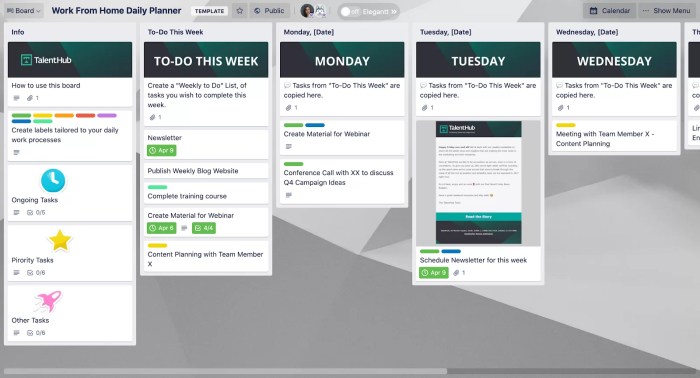Planner Apps Your Productivity Powerhouse
Ever feel like your to-do list is a runaway train? Planner apps are your secret weapon against chaos. From simple daily schedules to complex project management, these digital tools are transforming how we organize our lives. Forget sticky notes and overflowing notebooks – we’re diving deep into the world of digital planning, exploring everything from the latest features to the best apps for your needs.
This comprehensive guide will take you on a journey through the evolution of planner apps, highlighting key features, user experiences, and the future of productivity. We’ll uncover the pros and cons of different apps, compare their functionalities, and dissect their designs to help you find the perfect planner app to conquer your goals and achieve peak productivity.
Introduction to Planner Apps
In today’s fast-paced world, managing personal and professional tasks effectively is crucial. The evolution of personal organization tools has mirrored the advancements in technology. From handwritten calendars and to-do lists to sophisticated software solutions, the quest for efficient planning continues. This evolution reflects our growing need for streamlined systems that help us navigate our complex schedules and achieve our goals.
Types of Planner Apps

Planner apps cater to diverse needs and preferences. They offer a variety of functionalities, ranging from simple daily scheduling to complex project management.
- Daily planners: Ideal for tracking appointments, deadlines, and quick tasks. These apps typically focus on a single day’s activities, making them useful for managing appointments and quick to-dos.
- Weekly planners: These apps provide a broader view, enabling users to visualize their entire week’s schedule, helping them plan and allocate time across multiple activities.
- Monthly planners: Perfect for creating a high-level overview of a month’s events, enabling users to visualize long-term commitments and plan for larger projects.
- Project-based planners: Designed for teams or individuals working on specific projects. These apps excel at breaking down projects into smaller tasks, assigning deadlines, and tracking progress.
Key Features of Planner Apps
Most planner apps share core functionalities that contribute to their overall efficiency. These features empower users to stay organized and achieve their goals.
- Task Management: The ability to create, prioritize, and track tasks, often with features like subtasks and dependencies.
- Calendar Integration: Syncing with various calendars (Google Calendar, Outlook Calendar, etc.) for a holistic view of appointments and events.
- Reminders: Setting alerts for tasks, appointments, and deadlines, preventing missed obligations.
- Note-Taking: Facilitating the capture and organization of notes, ideas, and relevant information related to tasks or projects.
Target User Demographics
Planner apps cater to diverse demographics, each with specific needs and preferences.
- Students: Benefit from daily and weekly planners for managing assignments, exams, and extracurricular activities.
- Professionals: Rely on project-based planners for managing deadlines, team collaborations, and project progress.
- Individuals: Employ daily and weekly planners for managing appointments, errands, and personal commitments.
Comparison of Free vs. Paid Planner Apps
| Category | Pros | Cons |
|---|---|---|
| Free | Accessibility, Basic functionalities, Potential for customization, Often good for a quick start. | Limited features, Potential for ads, Fewer integrations, Data security may be compromised |
| Paid | Advanced features, Robust integrations, Data security, Dedicated customer support, Premium user experience | Cost, Potential learning curve, Not always the best for every user |
